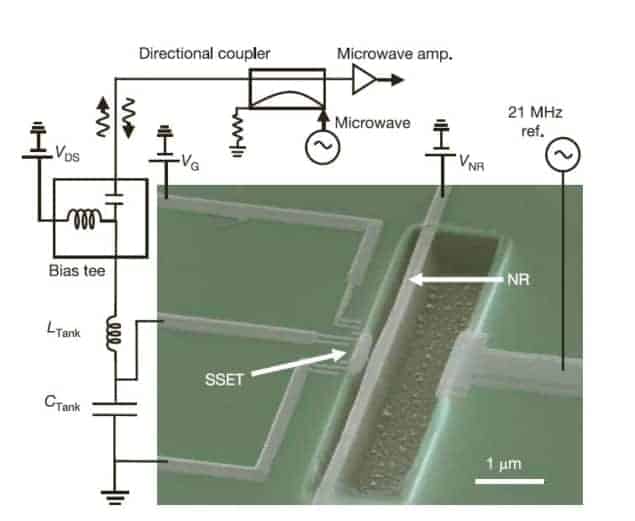Researchers have developed a quantum electromechanical technique to exploit microscopic quantum effects on a macroscopic scale. The technique involves cooling a resonating beam of atoms by measuring its vibrations and could one day be used to cool nanoscale mechanical devices, say the researchers (Nature 443 193).

According to Newton’s third law, for every action there is always an equal and opposite reaction. With similar inevitability, this time in quantum physics, for every measurement there is always a perturbation of the object being measured. This phenomenon, known as quantum back-action, could now be put to practical use, say researchers at the University of Maryland.
The team, lead by Keith Schwab, electrostatically coupled a superconducting single-electron transistor (SSET) with a resonating silicon nitride beam (oscillating like a guitar string) by applying a voltage between them.
Since changes in the position of the beam altered the SSET conductivity, current measurements in the SSET (the ‘observer’) provided a probe of the resonator’s position (the ‘observed’). At the same time, the researchers found that intrinsic random charge fluctuations in the SSET lead to a back-action force which changed the frequency, position and damping rate of the resonator.
In a “counter-intuitive” development the team described how by applying a voltage at a value corresponding to a quantized energy state of the electrons passing through the SSET, they found that damping in the resonator mode causes a temperature drop from 550 mK to 300 mK. In this situation, the SSET became the absorber rather than the source of heat.
This finding, say the researchers, has opened up the possibility of using the quantum back-effect to cool down components of nanoscale mechanical devices.
The experiment was performed at the University of Maryland in the US, with the help of theoretical physicists at Nottingham and McGill Universities and Dartmouth College.



